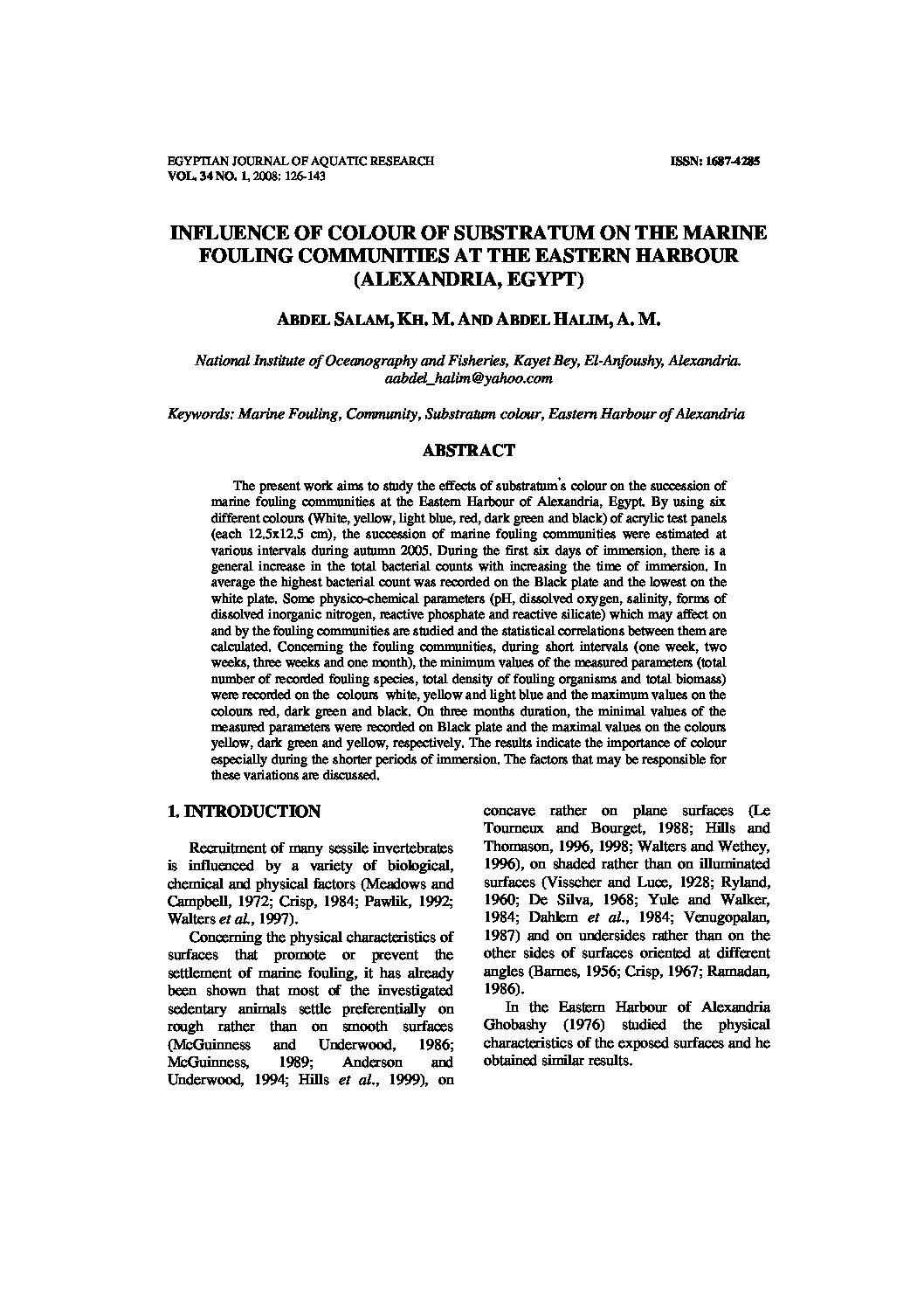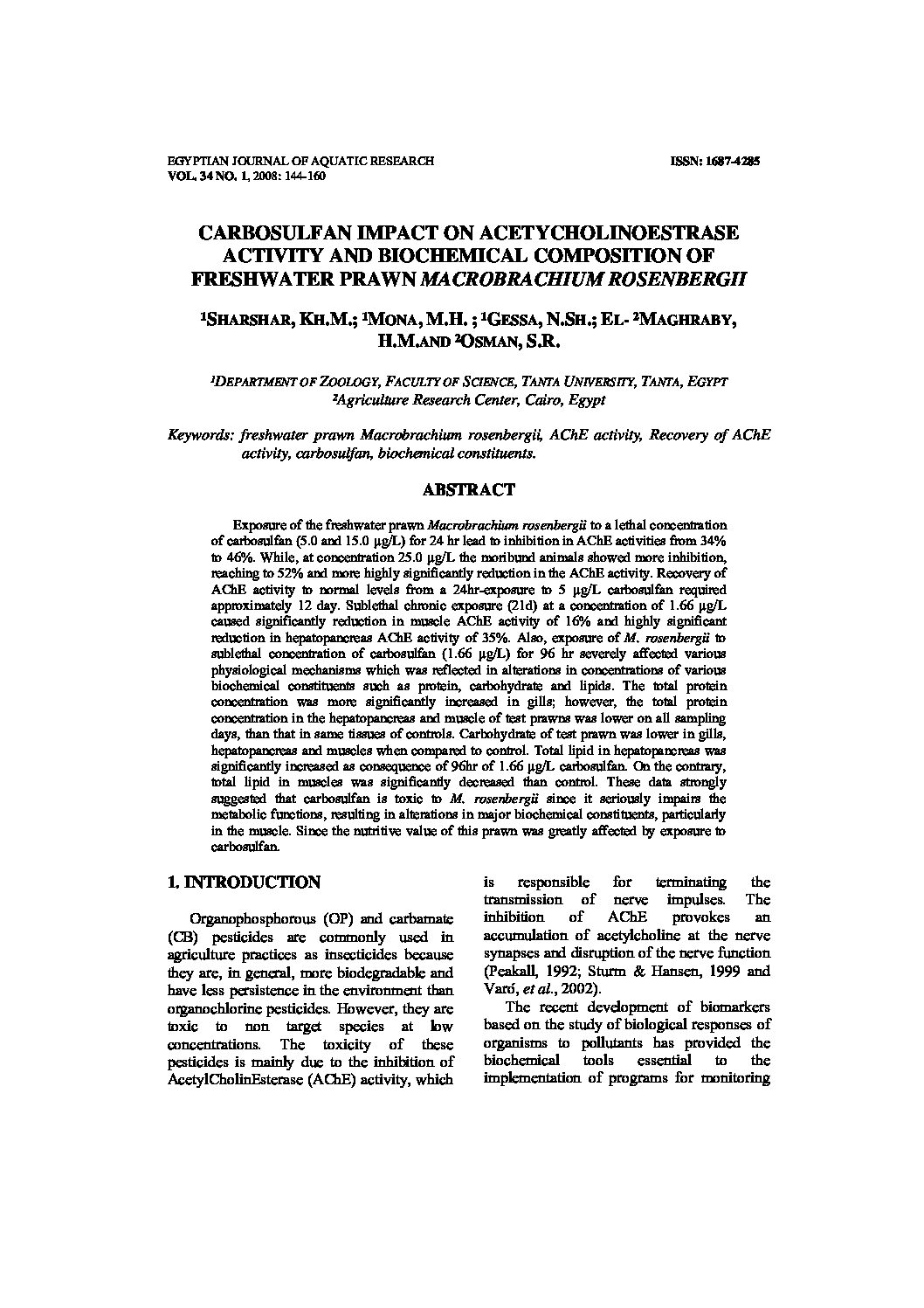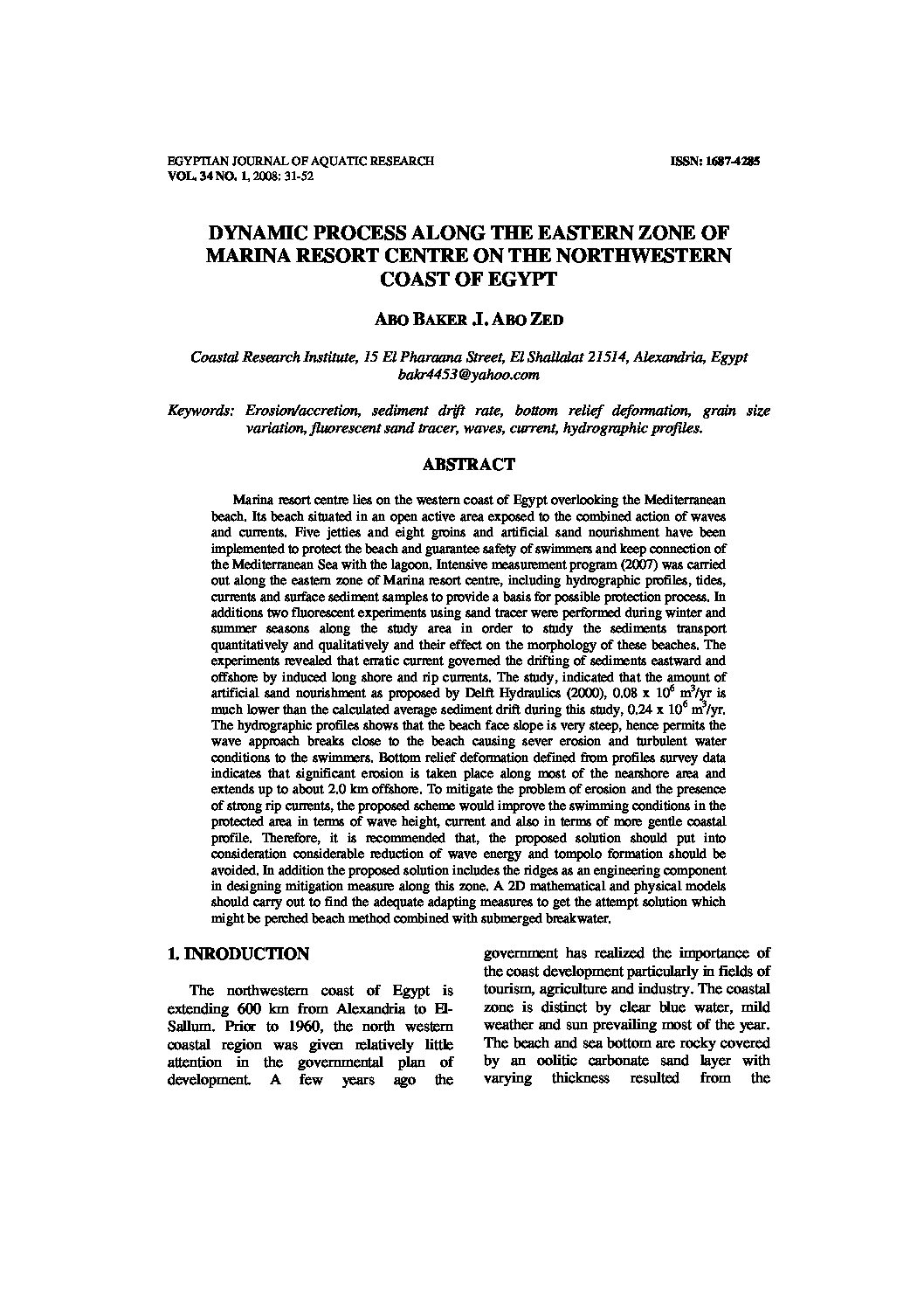Categories
vol-34INFLUENCE OF COLOUR OF SUBSTRATUM ON THE MARINE
FOULING COMMUNITIES AT THE EASTERN HARBOUR
(ALEXANDRIA, EGYPT)
ABDEL SALAM, KH. M. AND ABDEL HALIM, A. M.
National Institute of Oceanography and Fisheries, Kayet Bey, El-Anfoushy, Alexandria.
[email protected]
Keywords: Marine Fouling, Community, Substratum colour, Eastern Harbour of Alexandria
ABSTRACT
The present work aims to study the effects of substratum’
s colour on the succession of
marine fouling communities at the Eastern Harbour of Alexandria, Egypt. By using six
different colours (White, yellow, light blue, red, dark green and black) of acrylic test panels
(each 12.5×12.5 cm), the succession of marine fouling communities were estimated at
various intervals during autumn 2005. During the first six days of immersion, there is a
general increase in the total bacterial counts with increasing the time of immersion. In
average the highest bacterial count was recorded on the Black plate and the lowest on the
white plate. Some physico-chemical parameters (pH, dissolved oxygen, salinity, forms of
dissolved inorganic nitrogen, reactive phosphate and reactive silicate) which may affect on
and by the fouling communities are studied and the statistical correlations between them are
calculated. Concerning the fouling communities, during short intervals (one week, two
weeks, three weeks and one month), the minimum values of the measured parameters (total
number of recorded fouling species, total density of fouling organisms and total biomass)
were recorded on the colours white, yellow and light blue and the maximum values on the
colours red, dark green and black. On three months duration, the minimal values of the
measured parameters were recorded on Black plate and the maximal values on the colours
yellow, dark green and yellow, respectively. The results indicate the importance of colour
especially during the shorter periods of immersion. The factors that may be responsible for
these variations are discussed.







